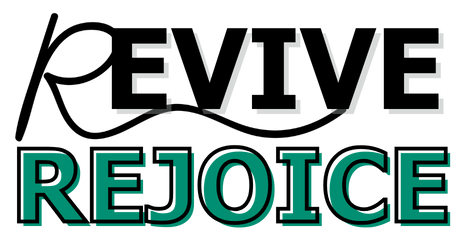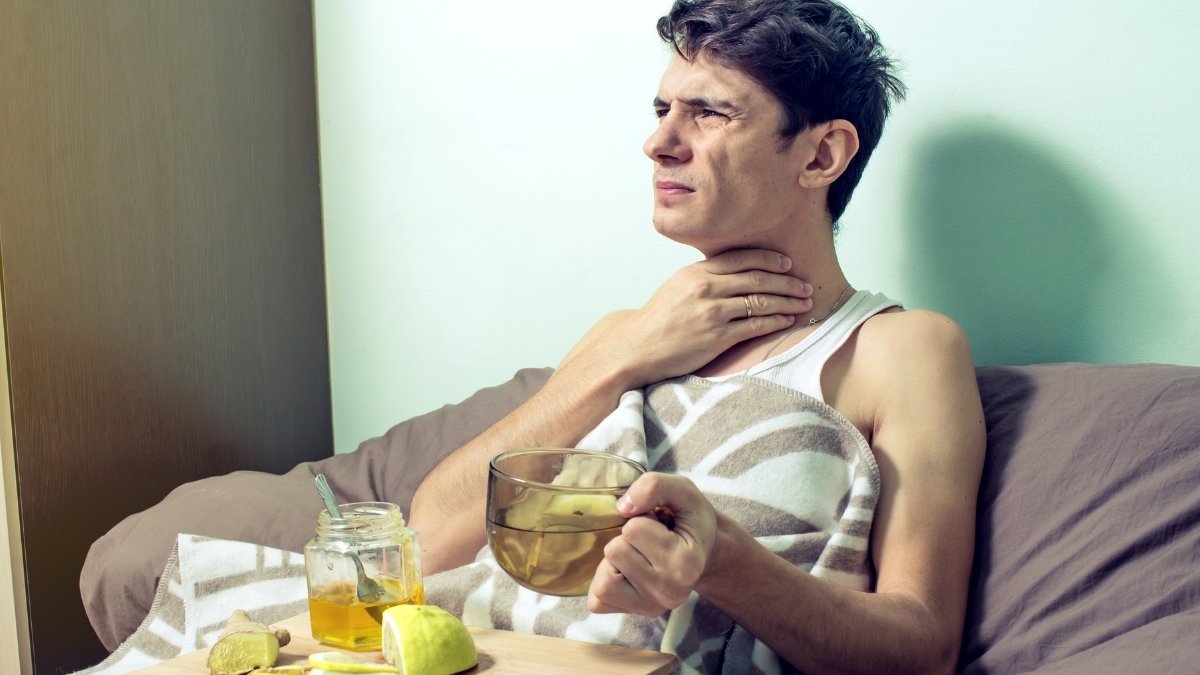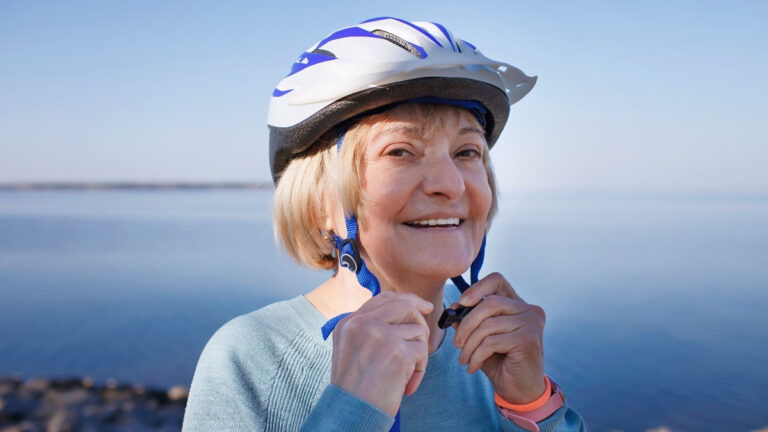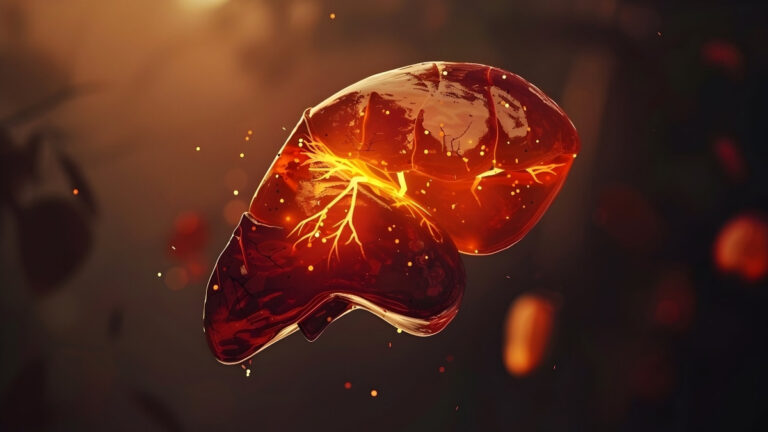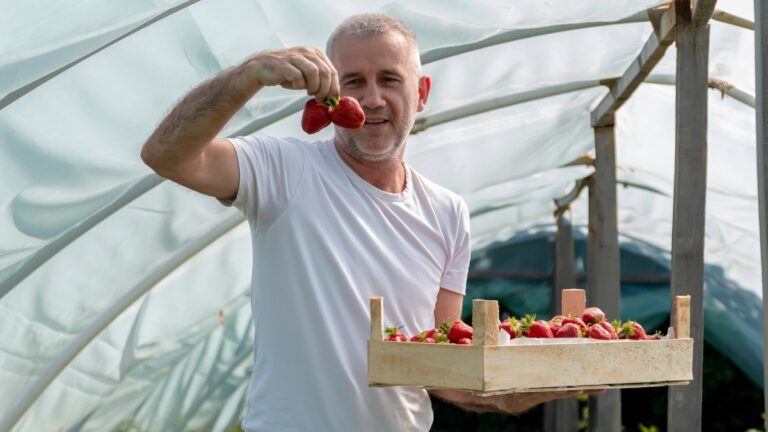The Seemingly Harmless Drink That’s a “Ticking Time Bomb” for Your Blood Pressure (And What to Sip Instead)
You religiously take your blood pressure medication, cut back on salt, and exercise regularly—yet your numbers refuse to budge. The culprit might be sitting in your refrigerator right now.
Most people don’t realize that certain beverages can increase blood pressure as much as—or more than—salty foods.
While you’re carefully monitoring your sodium intake from meals, your daily drinks could be delivering hidden doses of sugar, sodium, caffeine, and other compounds that wreak havoc on your cardiovascular system.
Here’s what you’ll discover in this guide: the specific beverages scientifically proven to raise blood pressure, the exact mechanisms behind how these drinks affect your cardiovascular system.
Practical alternatives that won’t make you feel deprived, and how to decode drink labels to spot blood pressure dangers before they become problems.
Why Your Drinks Matter for Blood Pressure
1. The “Innocent Drink” Paradox
We have a blind spot for liquid calories. Unlike food, drinks are processed almost immediately, hitting your bloodstream in minutes.
There’s minimal chewing or digestion, meaning the sugar and sodium course through your veins and impact your vascular system with surprising speed.
2. The Internal Chain Reaction
Here’s the rapid-response problem:
- Sugary drinks spike blood sugar, releasing insulin.
- This insulin signals your kidneys to hold onto sodium.
- Retaining sodium increases your blood volume.
- More blood volume forces your heart to pump harder, raising pressure.
3. The “Silent Damage” (Uric Acid)
It’s not just about volume. Your body converts excess sugar (especially fructose) into uric acid.
This uric acid directly damages the inner lining of your blood vessels (the endothelium), making them stiff and less flexible. Stiff vessels = high pressure.
4. The Sugar Bomb: Soda
A single 20-ounce soda can contain more than 16 teaspoons of sugar, blowing past the daily recommended limit (25g for women, 36g for men).
5. The Hidden Sugar Traps
It’s not just soda. Drinks marketed as “healthy” are often just as bad. Compare them to the AHA’s daily limit for men (36g).
6. The Takeaway: Accumulation
A coffee, a soda at lunch, and a beer at dinner create a sustained, day-long assault on your cardiovascular system.
Because they feel “innocent,” these drinks are often the missing piece in the blood pressure management puzzle. Your choice of beverage matters more than you think.
Why Your Drinks Matter More Than You Think for Blood Pressure
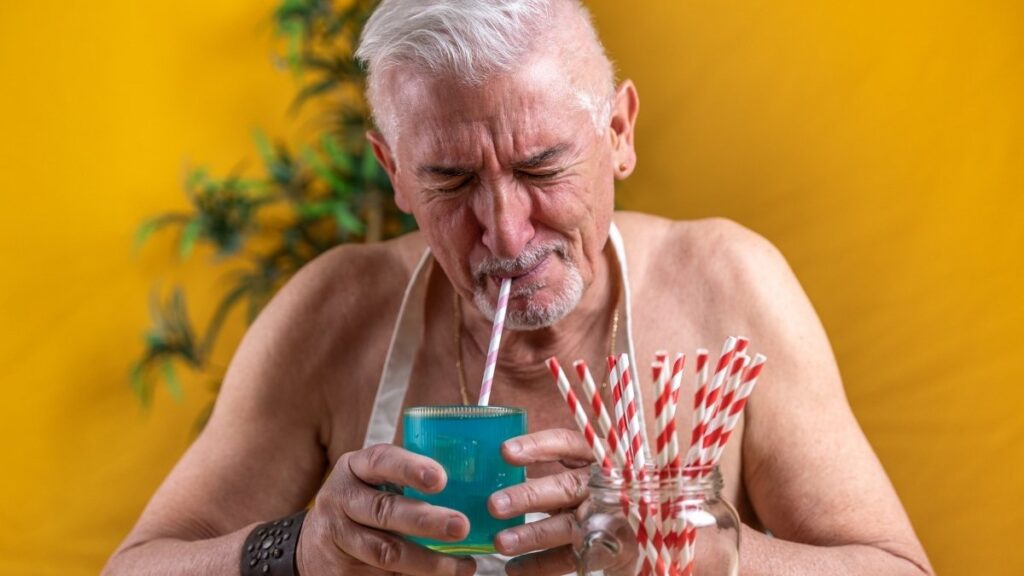
Your body processes liquid calories completely differently than solid food, and that difference matters tremendously for blood pressure management. When you drink something, it hits your bloodstream fast.
There’s minimal chewing, less digestive work, and within minutes, whatever was in that drink is coursing through your veins and affecting your vascular system.
Here’s what happens inside your body: sugary or high-sodium drinks trigger rapid blood sugar spikes that cause your pancreas to release insulin. This insulin response signals your kidneys to hold onto sodium, which increases blood volume and forces your heart to pump harder.
At the same time, excess sugar gets converted to uric acid, which damages the inner lining of your blood vessels and makes them less flexible. Less flexible vessels mean higher pressure.
Now let’s examine the specific beverages that pose the greatest threat to your blood pressure.
The Sugar Bomb: Sodas and Sweetened Beverages
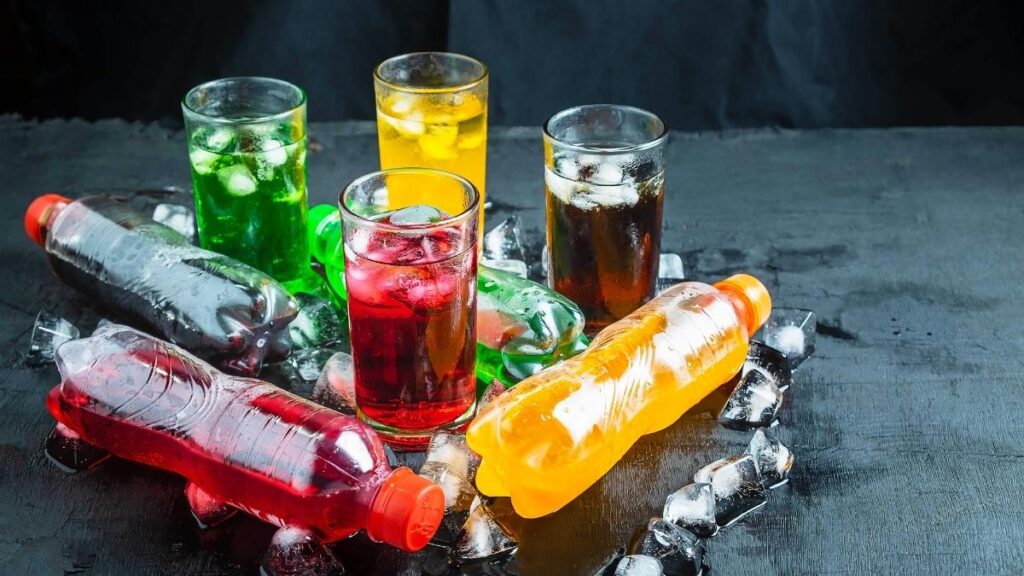
Sugar does far more damage to your blood pressure than most people realize. When you consume added sugar—especially the fructose found in sodas and sweetened beverages—your liver converts it into uric acid.
This uric acid directly damages the endothelial cells lining your blood vessels, making them stiff and less responsive. When your blood vessels can’t relax properly, pressure builds up. At the same time, excess sugar triggers insulin resistance and weight gain, both of which independently raise blood pressure.
The Regular Soda Reality
A standard 20-ounce bottle of Coca-Cola contains 65 grams of sugar. That’s more than 16 teaspoons dumped into one drink. Pepsi clocks in at 69 grams for the same size, and Mountain Dew delivers a whopping 77 grams.
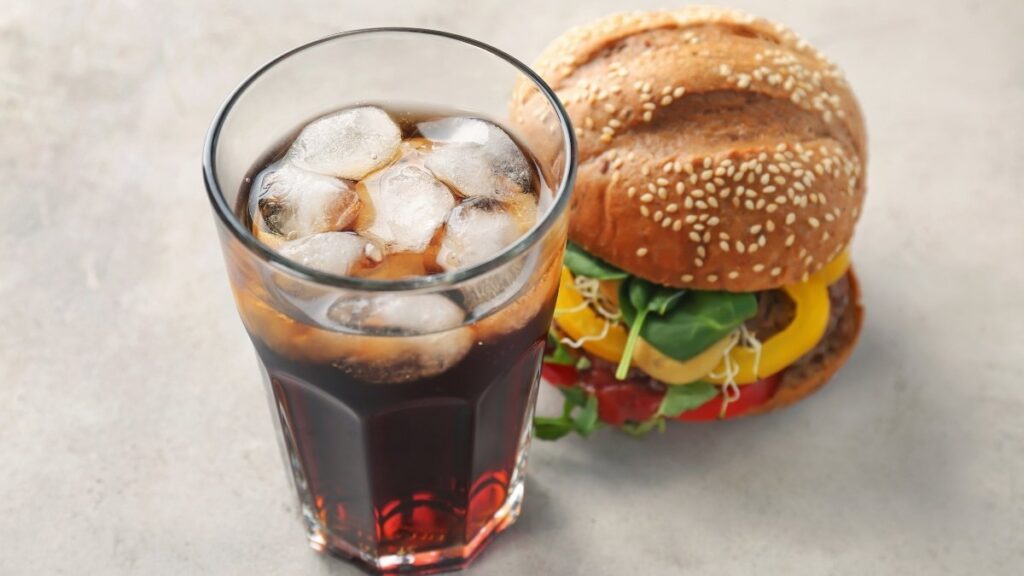
Research published in recent hypertension studies shows that consuming just one sugar-sweetened beverage daily can increase your systolic blood pressure by 1.8 mmHg and diastolic by 1.1 mmHg. That might not sound like much, but if you’re drinking multiple sodas daily, those numbers add up fast.
The Diet Soda Debate
You might think switching to diet soda solves the problem, but the science tells a more complicated story. Studies on artificial sweeteners and blood pressure show mixed results, but many researchers are concerned.
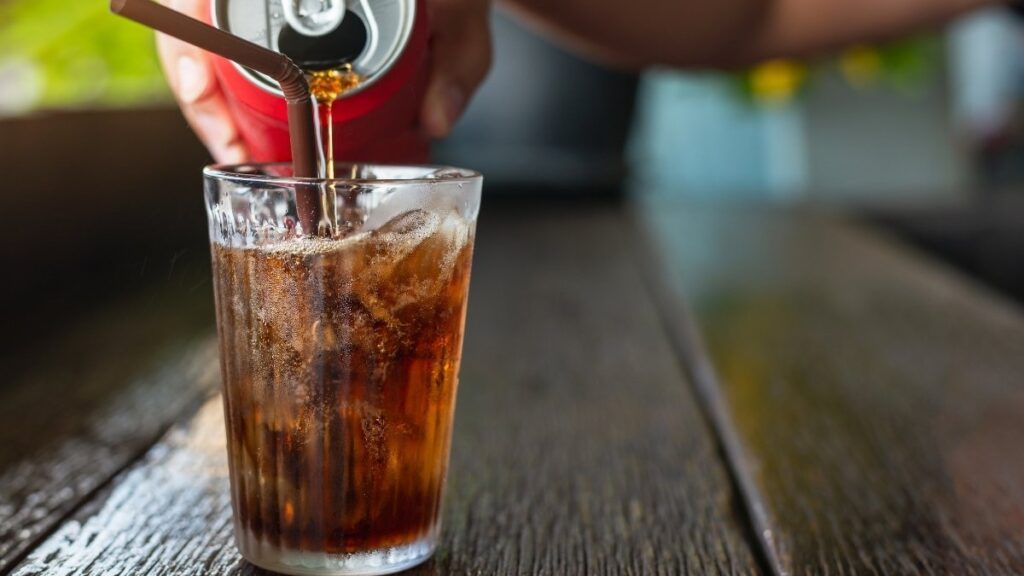
Some evidence suggests that artificial sweeteners may disrupt your body’s metabolic processes and actually increase cravings for sweet foods, leading to weight gain—which definitely raises blood pressure.
Other studies have found that diet soda drinkers have higher rates of hypertension, though it’s unclear whether the soda causes it or whether people with health concerns simply choose diet versions.
Hidden Sugar Traps
The obvious culprits are easy to spot, but what about those drinks marketed as healthy? Vitamin Water contains 27 grams of sugar per bottle. Enhanced waters with added electrolytes and vitamins often pack 15-20 grams.
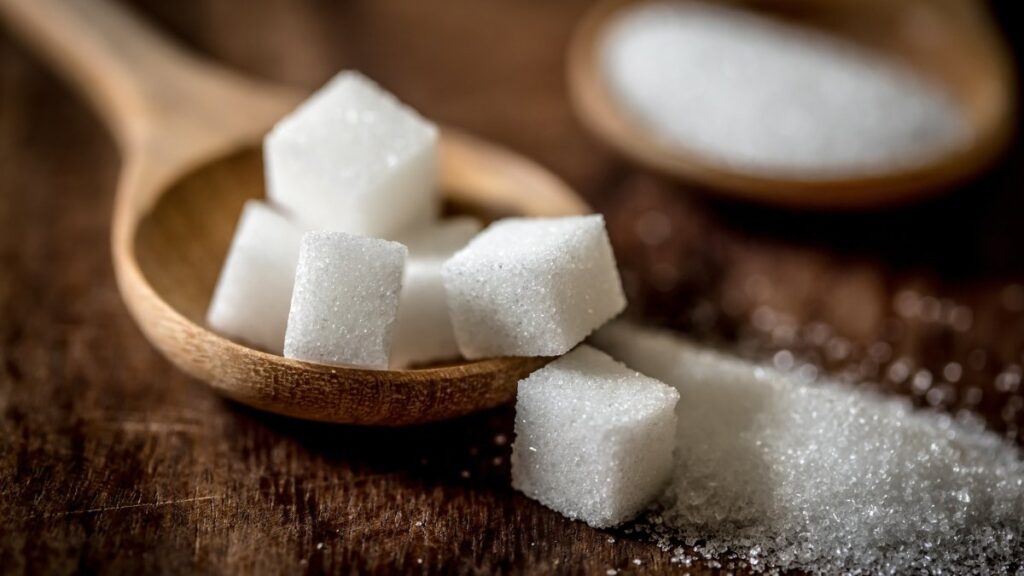
Many kombucha brands add significant sugar during the brewing process—some contain up to 16 grams per serving. Even your favorite coffee shop drinks are sugar bombs in disguise. A grande caramel frappuccino from Starbucks contains 54 grams of sugar, nearly matching a can of soda.
Energy Drinks: A Double Threat to Your Blood Pressure
Energy drinks are particularly dangerous for anyone concerned about hypertension because they combine multiple blood pressure-raising ingredients into one potent package.
You’re getting high doses of caffeine, massive amounts of sugar, and a cocktail of stimulants that your cardiovascular system definitely doesn’t need.
The Dangerous Cocktail
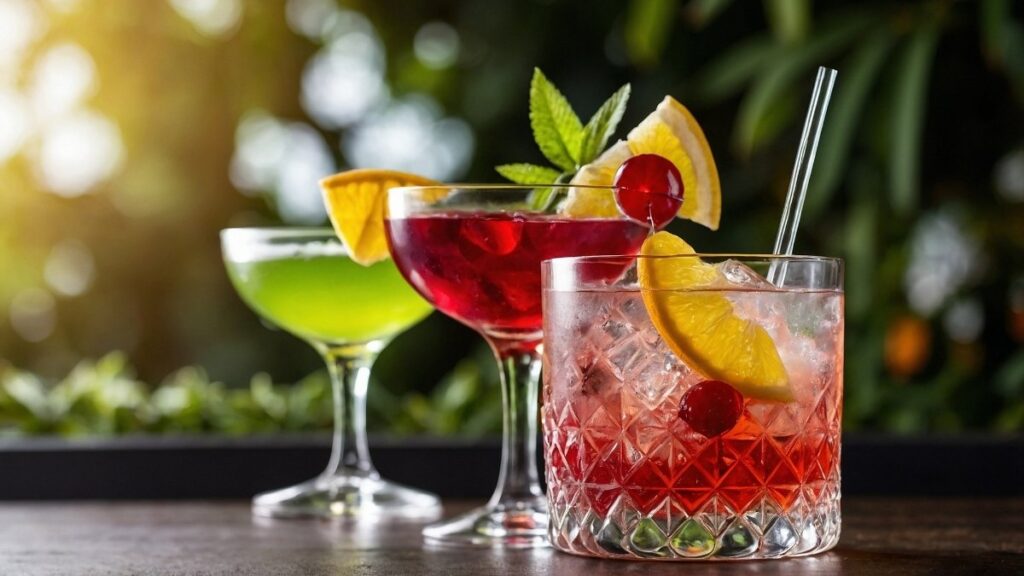
A 16-ounce can of Monster Energy contains 160 mg of caffeine and 54 grams of sugar. Red Bull delivers 111 mg of caffeine and 37 grams of sugar in a 12-ounce can. But caffeine and sugar are just the start.
These drinks also contain guarana (which is caffeine in disguise), taurine, ginseng, and B vitamins in doses far exceeding what your body needs. This combination creates an immediate and dramatic cardiovascular response.
Research documenting energy drink effects shows blood pressure increases of 10-15 mmHg within 30 minutes of consumption. For someone with already elevated blood pressure, this kind of acute spike can be genuinely dangerous.
Emergency room physicians have reported cases of hypertensive crisis—blood pressure so high it requires immediate medical intervention—in young, otherwise healthy people who consumed multiple energy drinks.
The Long-Term Risks
Regular consumption creates even more concerning patterns. Your heart rate increases, your blood vessels constrict, and your body releases stress hormones that keep blood pressure elevated for hours.
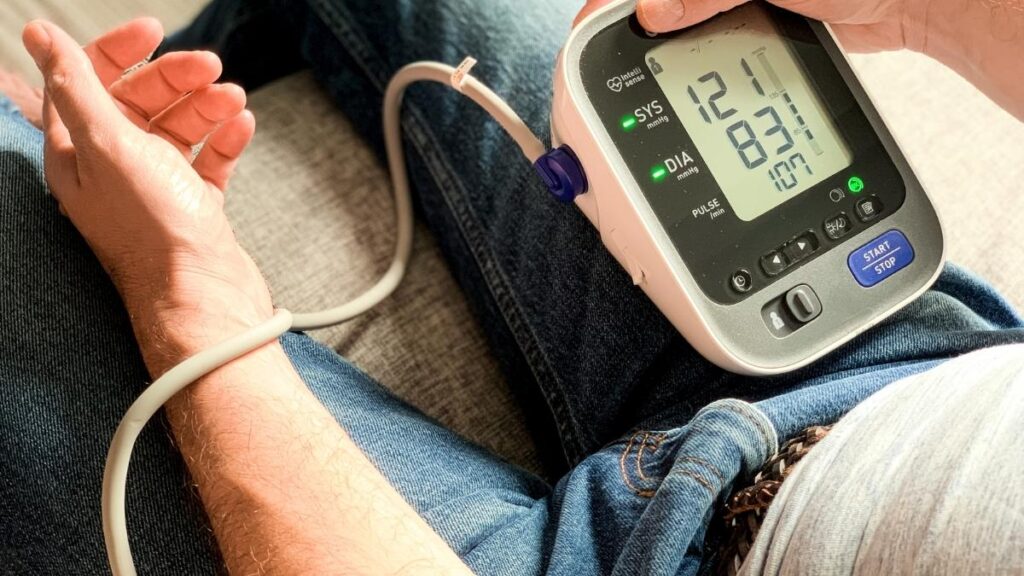
If you’re drinking energy drinks daily or multiple times per week, you’re creating a chronic state of elevated cardiovascular stress. This is especially risky if you’re already taking blood pressure medication, as the combination can create unpredictable and potentially dangerous interactions.
The Caffeine Conundrum: Coffee and Tea
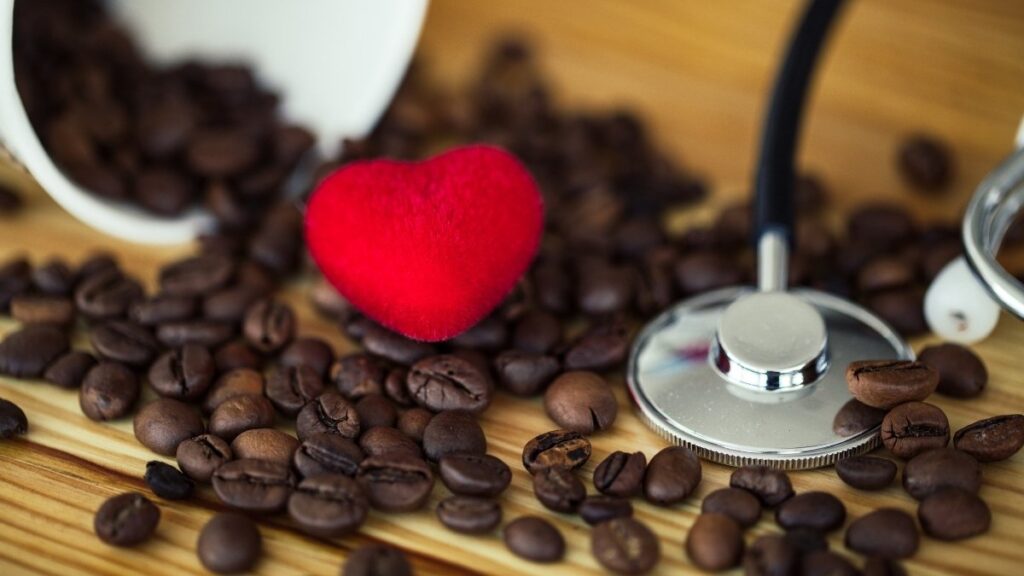
Caffeine’s relationship with blood pressure is complicated, and understanding this nuance can help you make smarter choices. Unlike sugar, which universally raises blood pressure, caffeine affects people differently based on genetics, consumption patterns, and individual sensitivity.
Why Some People React Differently
When caffeine enters your system, it blocks adenosine receptors in your brain and blood vessels. Adenosine normally helps blood vessels relax, so blocking it causes them to constrict temporarily.
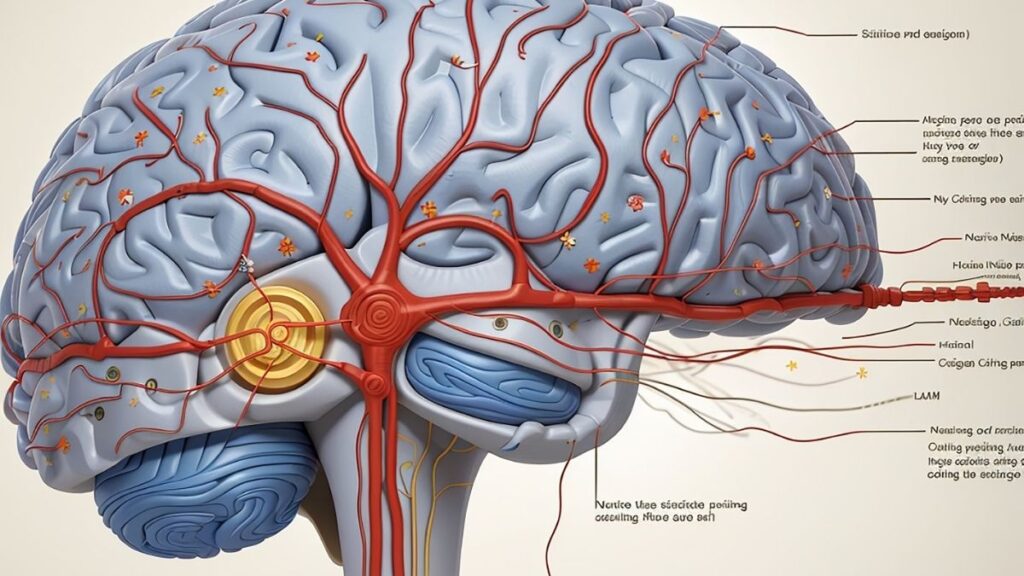
For occasional coffee drinkers, this can cause a noticeable blood pressure spike—sometimes 10 mmHg or more within an hour. But here’s where it gets interesting: regular coffee drinkers often develop tolerance. Their bodies adapt to the caffeine, and the blood pressure effect diminishes or disappears entirely.
How to Test Your Sensitivity
Want to know if caffeine affects your blood pressure? Check your numbers before having coffee and then 30-60 minutes after. If you see increases of more than 5-10 mmHg, you’re probably caffeine-sensitive and should consider cutting back.
If you’re a daily coffee drinker and your blood pressure is well-controlled, the coffee likely isn’t your problem.
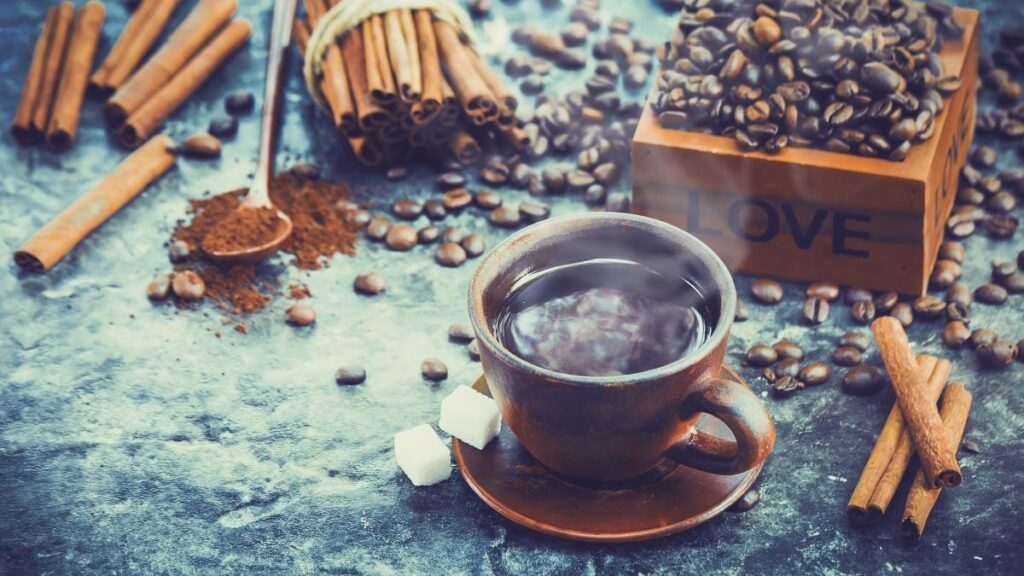
Different preparations matter too. An 8-ounce cup of drip coffee contains about 95 mg of caffeine, while espresso has 63 mg per shot.
Cold brew can pack even more—sometimes 200 mg or more per serving because of the extended brewing time. Black tea contains 25-48 mg per cup, green tea has 25-29 mg, and herbal teas typically contain none.
Finding Your Safe Limit
The American Heart Association suggests that people with hypertension should limit caffeine to 200 mg daily if they’re sensitive.

That’s roughly two cups of regular coffee. But the real answer depends on your individual response. If you love your morning coffee and your blood pressure is stable, there’s no need to eliminate it. If you’re drinking five cups daily and struggling with hypertension, that’s a different story.
Pay attention to timing too. Drinking caffeine late in the day can disrupt sleep, and poor sleep independently raises blood pressure. Many people find that limiting caffeine to morning hours helps both their sleep quality and their cardiovascular health.
Alcohol: The Cardiovascular Wildcard
Drinks & Blood Pressure: Alcohol and Fruit Juice
How Alcohol Raises Blood Pressure
When you drink alcohol, several mechanisms can lead to increased blood pressure:
- Stress Hormones: Triggers release of cortisol and adrenaline, making your heart beat faster and vessels constrict.
- Renin-Angiotensin System: Interferes with your body’s key blood pressure regulation.
- Weight Gain: Adds calories, contributing to weight gain, a known factor for hypertension.
- Poor Sleep: Disrupts sleep quality, which is strongly linked to higher blood pressure.
- Rebound Effect: Blood pressure drops while drinking but spikes higher than baseline hours later.
The Changing Guidelines
Recommendations define “moderate drinking” as no more than one drink daily for women and two for men. However, recent research questions the supposed benefits of even moderate consumption.
If you have hypertension and drink regularly, reducing consumption can often lead to blood pressure drops of 2-4 mmHg or more.
The Fiber Loss Problem
While juice comes from fruit, removing fiber concentrates sugar, leading to a blood pressure effect similar to soda. The fiber in whole fruit slows sugar absorption.
Whole Orange
8oz Orange Juice
The Grapefruit Problem
CRITICAL WARNING: Grapefruit juice (and sometimes pomegranate juice) can dangerously interact with certain blood pressure medications, especially calcium channel blockers (e.g., amlodipine, nifedipine). It can cause drugs to build up to toxic levels. Always check with your doctor if on medication!
Portion Control Reality
Store-bought juices are often sugar bombs disguised as healthy. A single 16oz bottle can easily exceed daily added sugar limits.
- Tropicana Orange Juice (16oz): 44 grams sugar
- Minute Maid Apple Juice (16oz): 48 grams sugar
- Welch’s Grape Juice (16oz): 58 grams sugar
The safest choice is whole fruit. If you drink juice, dilute it with water and stick to small, 4oz portions.
Alcohol’s effect on blood pressure follows a clear pattern: a little bit might be neutral or even slightly beneficial, but anything beyond moderate consumption definitely raises your numbers.
The problem is that “moderate” is much less than most people think, and the supposed benefits of alcohol have come under serious scrutiny in recent research.
How Alcohol Raises Blood Pressure
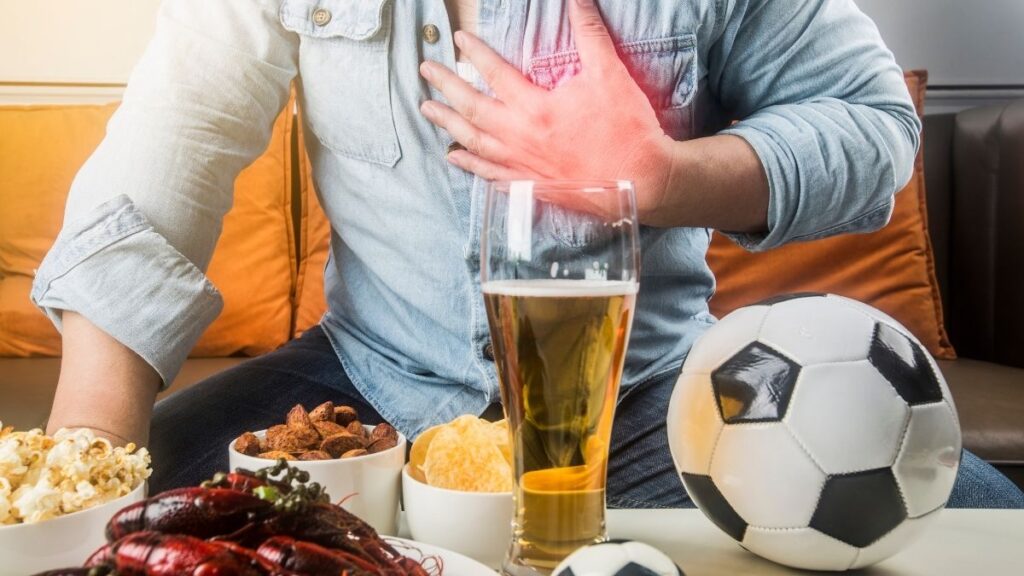
When you drink alcohol, several things happen in your body that affect blood pressure. First, alcohol triggers the release of stress hormones including cortisol and adrenaline. These hormones cause your heart to beat faster and your blood vessels to constrict.
Second, alcohol interferes with the renin-angiotensin system—your body’s primary blood pressure regulation mechanism. Third, regular drinking adds calories that lead to weight gain, which absolutely raises blood pressure. Fourth, alcohol disrupts sleep quality, and poor sleep is strongly linked to hypertension.
The Changing Guidelines

Current recommendations from the American Heart Association define “moderate drinking” as no more than one drink daily for women and two for men. One drink means 12 ounces of beer, 5 ounces of wine, or 1.5 ounces of spirits.
But here’s what’s changed: research from the past few years has called into question whether any amount of alcohol is truly beneficial for cardiovascular health. The supposed heart benefits of moderate drinking might have been overstated in earlier studies.
Different alcoholic beverages do have different effects, though the alcohol content matters most. Beer tends to contribute more to weight gain because of its carbohydrate content and the tendency to drink larger volumes.
Fruit Juice: Nature’s Sugar Bomb
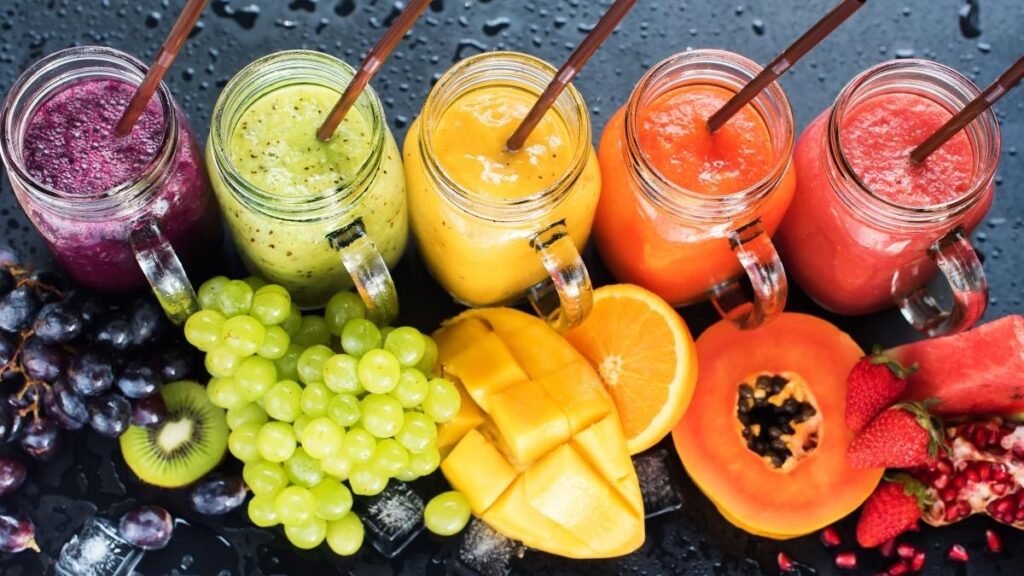
Fruit juice enjoys a health halo it doesn’t deserve. Yes, it comes from fruit. Yes, it contains vitamins. But when you remove the fiber and concentrate the sugar, you’re left with a beverage that affects your blood pressure remarkably similar to soda.
The Fiber Loss Problem
When you eat a whole orange, you consume about 12 grams of sugar along with 3 grams of fiber, water, and pulp that slow down sugar absorption. Your blood sugar rises gradually, and your body handles it well.
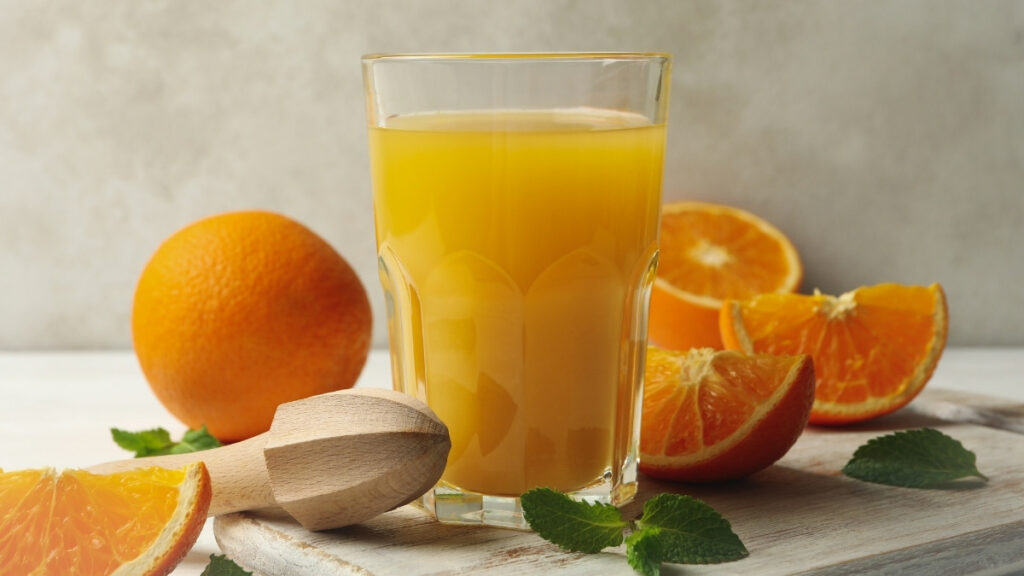
When you drink 8 ounces of orange juice, you’re getting the sugar from multiple oranges—about 21 grams—with virtually no fiber. This hits your bloodstream fast, triggers a strong insulin response, and contributes to the same blood pressure problems as other sugary drinks.
Studies comparing whole fruit consumption to fruit juice consistently show that juice drinkers have higher rates of weight gain and metabolic problems, both of which increase blood pressure. The glycemic index of juice is much higher than whole fruit, meaning it causes more dramatic blood sugar swings.
The Grapefruit Problem
Some juices create specific problems beyond sugar content. Grapefruit juice contains compounds called furanocoumarins that interfere with enzymes in your intestines responsible for breaking down medications.
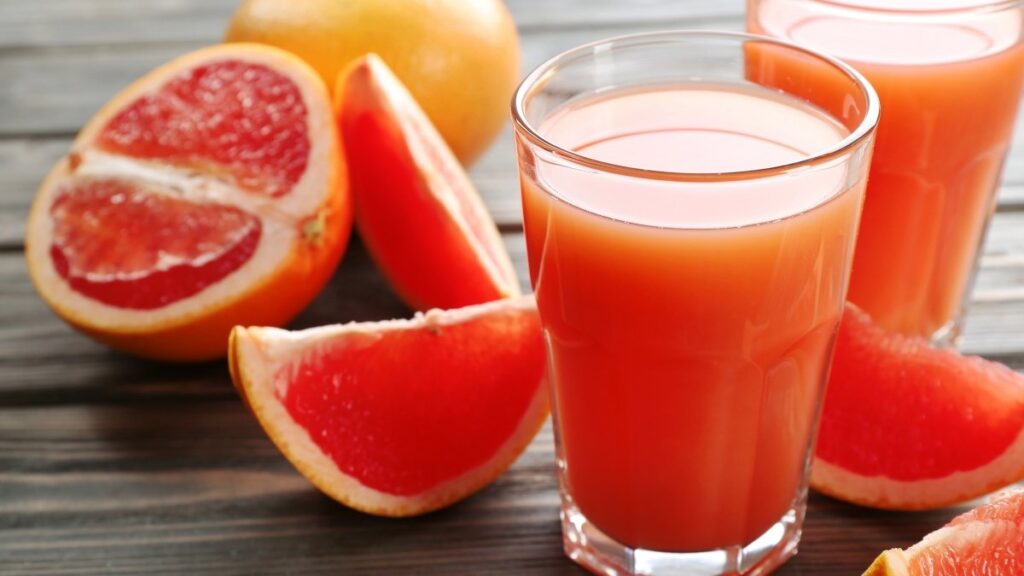
If you’re taking certain blood pressure medications—particularly calcium channel blockers like amlodipine, nifedipine, or felodipine—grapefruit juice can cause these drugs to build up in your system to dangerous levels. This can actually lower your blood pressure too much or cause serious side effects.
Pomegranate juice can also interact with blood pressure medications, though it’s less dramatic than grapefruit. The safest approach is to avoid these juices entirely if you’re on cardiovascular medications, or at minimum, check with your doctor about specific interactions.
The Portion Control Reality
If you’re going to drink juice, portion size matters enormously. A 4-ounce glass—which is smaller than most people pour—is the recommended maximum. Compare that to the 16-ounce bottles you find in stores, and you see the problem.
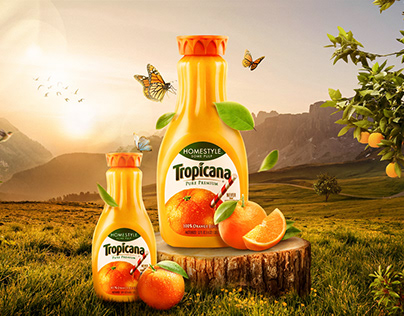
A bottle of Tropicana orange juice contains 44 grams of sugar. Minute Maid apple juice has 48 grams per bottle. Welch’s grape juice delivers 58 grams. These amounts rival or exceed regular soda, yet we perceive juice as healthy.
The smarter choice is always eating whole fruit instead of drinking juice. You get the fiber, you naturally eat less sugar, and you avoid the blood pressure spike. If you really love juice, dilute it half-and-half with water and stick to small portions.
Hidden Sodium Traps: Unexpected Salty Drinks
Most people carefully check nutrition labels for sodium in packaged foods, but completely overlook the sodium content in drinks. Some beverages contain shocking amounts of salt that can sabotage your blood pressure management efforts.
Hidden Sodium Traps: Unexpected Salty Drinks
Many drinks contain surprising amounts of sodium that can significantly impact your blood pressure, often without you realizing it. Don’t just check food labels—flip that bottle!
Vegetable Juice Surprises
Often perceived as healthy, regular vegetable juices can be high in sodium:
- V8 Regular (8oz): 640 mg Sodium
- Campbell’s Tomato Juice (8oz): 680 mg Sodium
Tip: Always opt for low-sodium versions (e.g., V8 Low Sodium: 140 mg).
Sports Drinks Aren’t What You Think
Marketed for athletes, but often consumed by non-athletes, adding unnecessary sodium and sugar:
- Gatorade (20oz bottle): 270 mg Sodium
- Powerade (20oz bottle): Similar amounts
Unless you’re an endurance athlete, these contribute to a double threat of sodium and sugar.
Surprising Sodium Sources
Sodium lurks in places you might not expect:
- Bottled Smoothies/Protein Drinks: 200-300 mg (from powders/preservatives)
- Broth-Based Drinks/Bouillon: 500-800 mg
- Some Tomato-Based Cocktail Mixers: 500-800 mg
Crucial: Always flip the bottle and check the sodium content!
The takeaway: Don’t overlook the sodium in your drinks! A single high-sodium beverage can consume a huge chunk of your daily allowance, especially if you’re managing hypertension. Make reading beverage labels a habit.
Vegetable Juice Surprises
Vegetable juices sound healthy, and they do contain vitamins and nutrients. But check the sodium content and prepare to be shocked.
An 8-ounce serving of regular V8 vegetable juice contains 640 mg of sodium—that’s 28% of the 2,300 mg daily limit for healthy adults, and 43% of the 1,500 mg limit recommended for people with hypertension.
Campbell’s tomato juice has 680 mg per serving. Some vegetable juice blends exceed 700 mg.
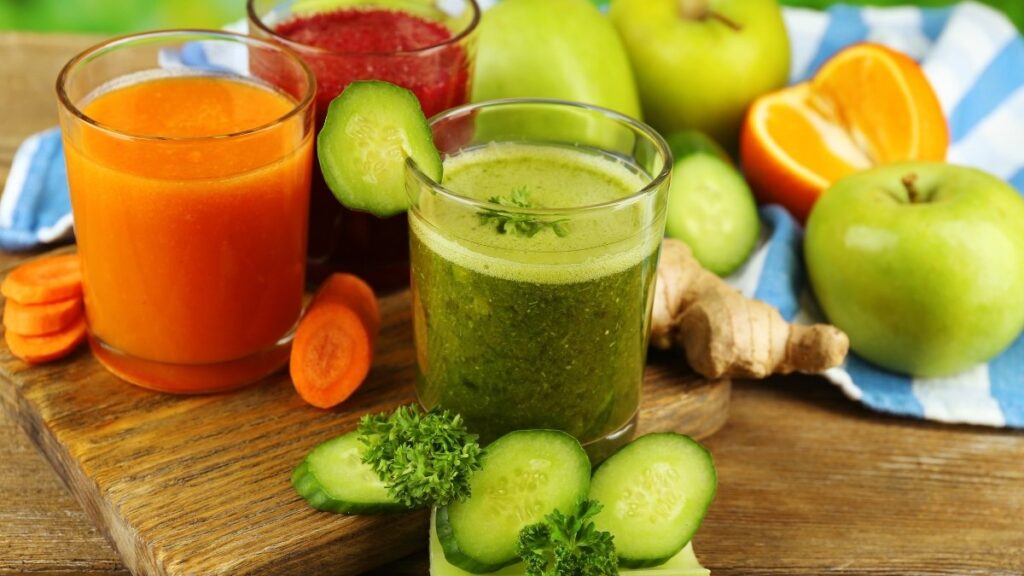
The low-sodium versions are much better—V8 Low Sodium has only 140 mg per serving—but you need to specifically look for these options because the regular versions dominate shelf space.
The salt is added during processing to enhance flavor, and while it makes the juice tastier, it’s doing your blood pressure no favors.
Sports Drinks Aren’t What You Think
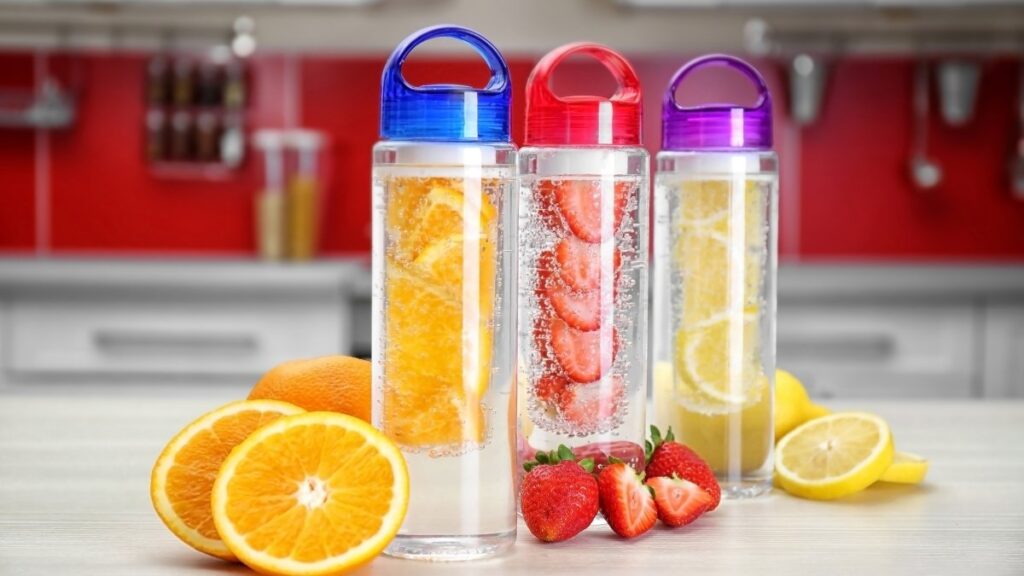
Sports drinks are marketed to athletes for replacing electrolytes lost during intense exercise, but most people drinking them aren’t running marathons. A 20-ounce bottle of Gatorade contains 270 mg of sodium.
Powerade has similar amounts. If you’re sitting at your desk sipping a sports drink, you’re just consuming unnecessary sodium and sugar without the athletic activity that would justify it.
These drinks serve a legitimate purpose for endurance athletes who lose significant sodium through sweat, but for everyday consumption, they’re a poor choice. The combination of sodium and sugar creates a double threat to blood pressure.
Surprising Sodium Sources
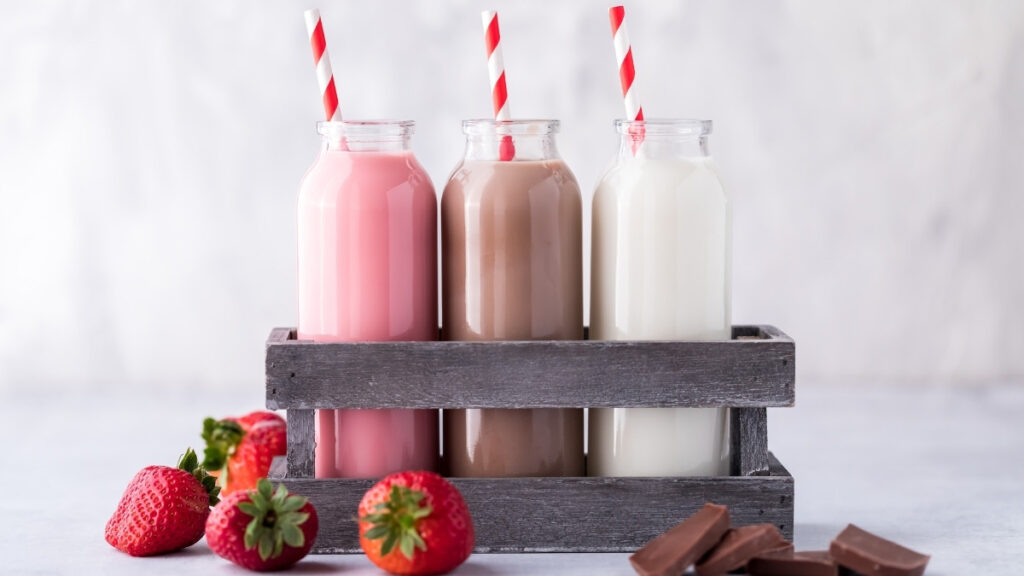
Bottled smoothies and protein drinks can also hide significant sodium. Some store-bought smoothie brands contain 200-300 mg of sodium, often from added protein powder or preservatives.
Savory drinks like bouillon, broth-based drinks, and even some tomato-based cocktail mixers can contain 500-800 mg of sodium per serving.
Reading labels becomes critical here. The FDA recommends that people with hypertension limit total daily sodium intake to 1,500 mg, which means a single high-sodium drink can consume a huge chunk of your daily allowance. Learn to automatically flip bottles around and check the sodium content before purchasing.
The “Health Halo” Offenders: Drinks That Seem Healthy But Aren’t
Some drinks enjoy stellar reputations despite containing ingredients that can raise blood pressure. These beverages are particularly dangerous because you think you’re making healthy choices while unknowingly sabotaging your cardiovascular health.
The “Health Halo” Offenders
The “Pro” (The Halo)
Rich in potassium and electrolytes, marketed as “nature’s sports drink.”
The “Con” (The Offender)
Naturally contains significant sodium and sugar (9-12g) *before* any additives.
A typical 8oz serving has ~250mg of sodium. Drinking this all day instead of water can add up quickly.
The “Pro” (The Halo)
Fermented tea rich in probiotics, which are good for gut health.
The “Con” (The Offender)
Substantial sugar (4-16g) is often added to improve taste, impacting blood pressure.
Some popular brands contain 16g of sugar or more per bottle, similar to some sodas.
The “Pro” (The Halo)
Contains protein, calcium, or vitamins (from milk or plant-based alternatives).
The “Con” (The Offender)
Loaded with added sugar (20-40g+) to create chocolate/vanilla flavors.
A single bottled frappuccino or flavored oat milk can contain more than your entire daily recommended sugar limit.
The Takeaway: “Healthy” marketing doesn’t always mean healthy for your blood pressure. Always check the nutrition label for hidden sugar and sodium, no matter how healthy the drink seems.
Coconut Water’s Sodium Surprise
Coconut water has been marketed as nature’s sports drink, rich in potassium and electrolytes. The potassium is real and can be beneficial, but many brands also contain substantial sodium.
Plain coconut water naturally contains about 250 mg of sodium per cup, and some brands add more.
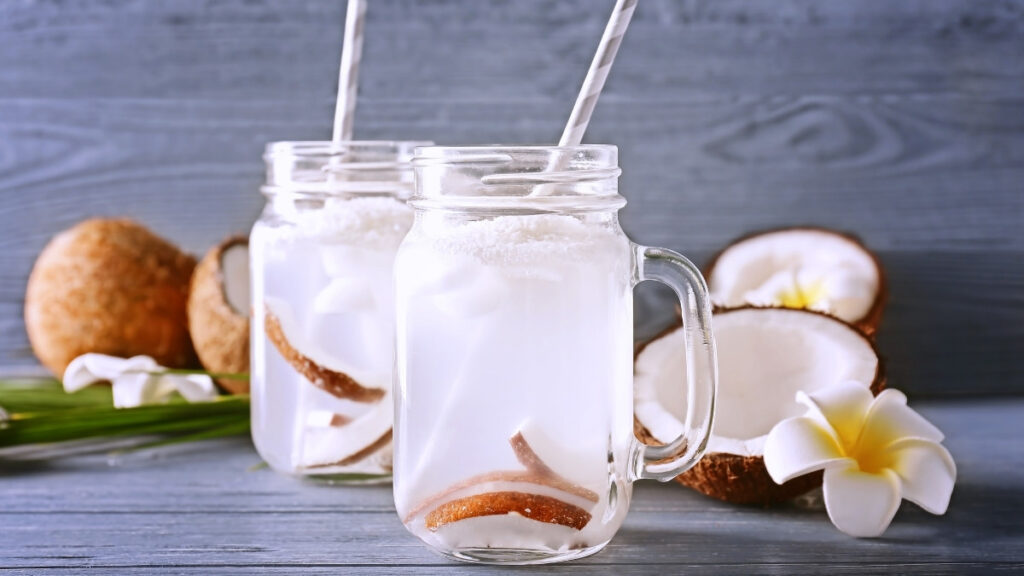
Vita Coco contains 45-60 mg per serving depending on the variety, which isn’t terrible, but Zico and other brands can range higher. If you’re drinking multiple servings thinking it’s pure hydration, you could be consuming more sodium than expected.
Kombucha’s Hidden Sugar
Kombucha has exploded in popularity as a probiotic-rich fermented tea. The problem? Many commercial kombuchas add substantial sugar during or after fermentation to improve taste.
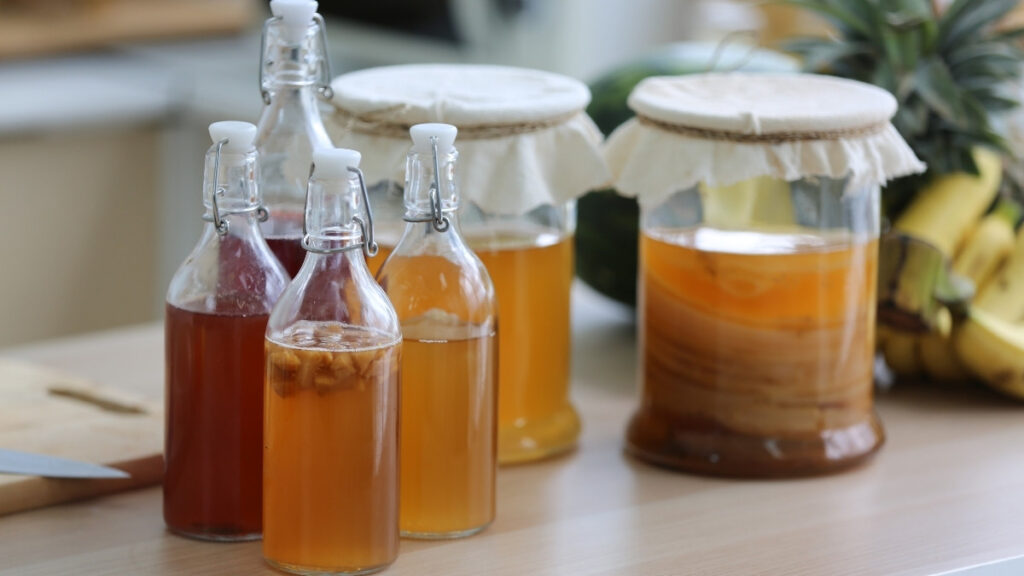
GT’s Synergy kombucha contains 4-16 grams of sugar per bottle depending on the flavor. Health-Ade has similar ranges. Some brands market themselves as low-sugar options but still contain 8-12 grams.
Flavored Milk and Alternatives
Chocolate milk, strawberry milk, and flavored plant-based milk alternatives often contain added sugars that turn a potentially healthy beverage into a blood pressure concern.
An 8-ounce serving of chocolate milk typically contains 20-25 grams of sugar. Some almond milk and oat milk brands add 10-15 grams of sugar per serving for vanilla or chocolate flavors.
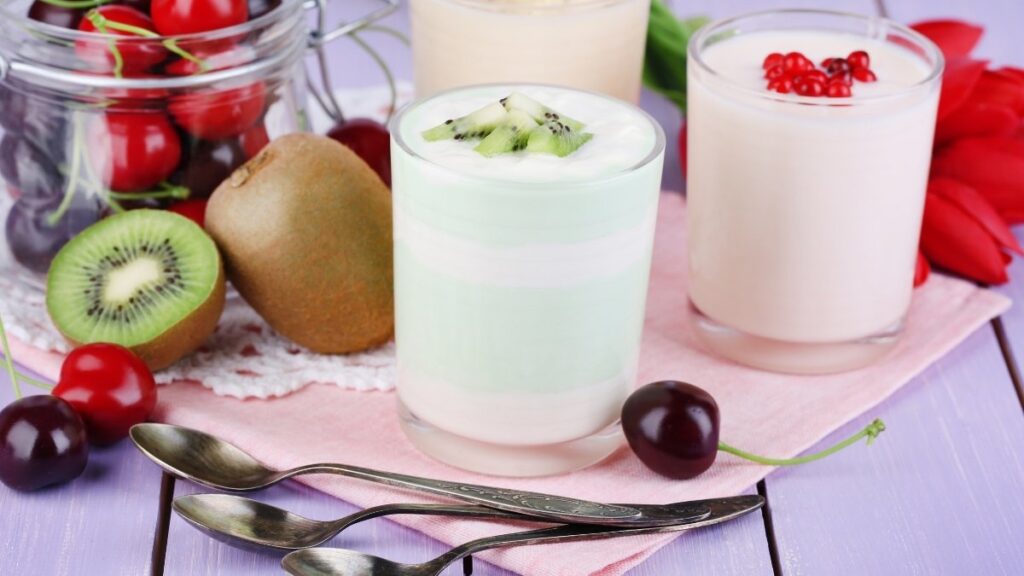
Even “healthy” protein shakes and bottled coffee drinks can be problematic. A Starbucks Frappuccino bottle (not the frozen drink, just the bottled version from grocery stores) contains 32 grams of sugar and 110 mg of sodium. Dunkin’ bottled iced coffee drinks often exceed 40 grams of sugar per bottle.
What to Drink Instead: Blood Pressure-Friendly Alternatives
What to Drink Instead
Knowing what to avoid is half the battle. Here are practical, realistic alternatives that support healthy blood pressure instead of sabotaging it.
Knowing what to avoid is only half the battle. You need practical, realistic alternatives that actually taste good and fit into your daily life. Here are beverages that support healthy blood pressure instead of sabotaging it.
Water—Made Interesting
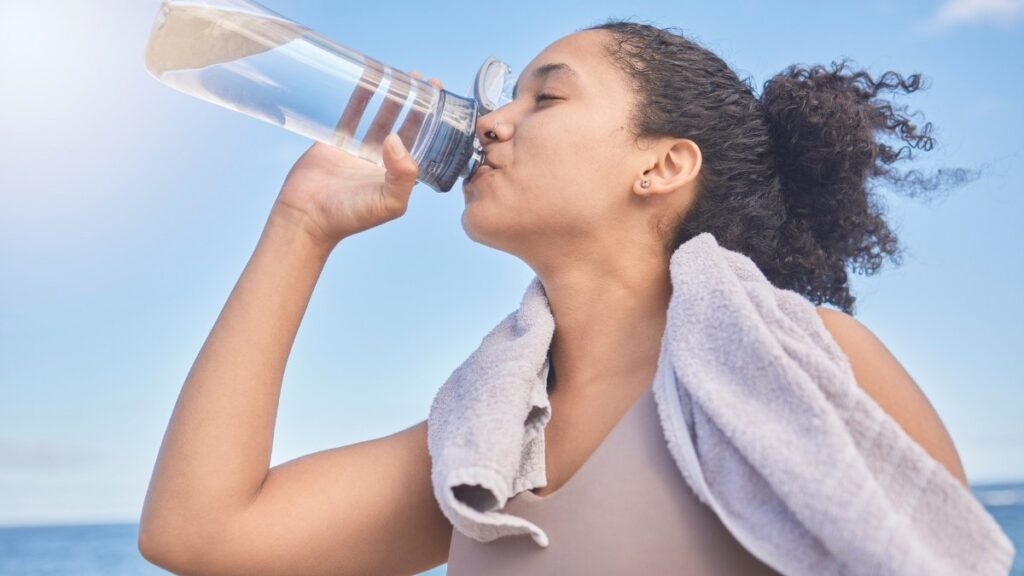
Plain water is the gold standard for hydration, but let’s be honest: it can feel boring when you’re used to flavored drinks. The solution is making water more appealing without adding sugar or sodium.
Try infusing water with fresh fruit—cucumber and mint is refreshing, berries add subtle sweetness, and lemon or lime provides brightness. Let it sit in the refrigerator for a few hours so the flavors develop.
Sparkling water offers the satisfaction of carbonation without any of the problems of soda. Brands like La Croix, Bubly, and Spindrift use natural flavors with zero sugar, zero sodium, and zero calories.
Just make sure you’re choosing plain sparkling water, not tonic water (which contains sugar) or club soda (which often contains added sodium).
Hibiscus Tea: The Blood Pressure Superstar
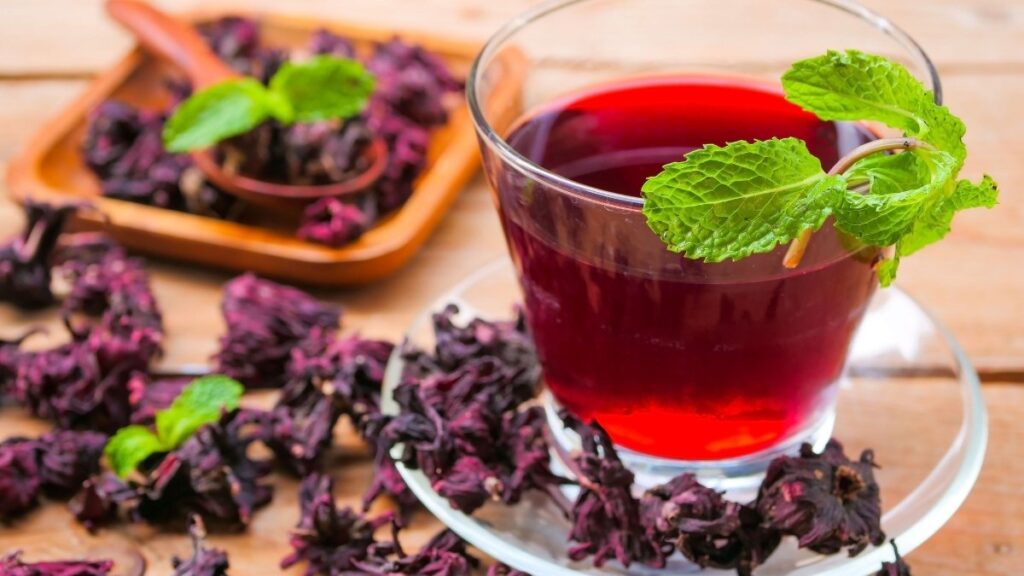
Multiple studies have shown that hibiscus tea can actually help lower blood pressure. Research published in the Journal of Hypertension found that drinking hibiscus tea daily reduced systolic blood pressure by an average of 7.2 mmHg in people with prehypertension and mild hypertension.
The anthocyanins and other compounds in hibiscus appear to help blood vessels relax and improve their function.
Brew hibiscus tea hot or cold, and drink 2-3 cups daily for potential benefits. You can find hibiscus tea at most grocery stores, often labeled as “Red Zinger” or sold as pure hibiscus. Don’t add sugar—try a squeeze of lemon instead if you want extra flavor.
Beet Juice for Nitric Oxide
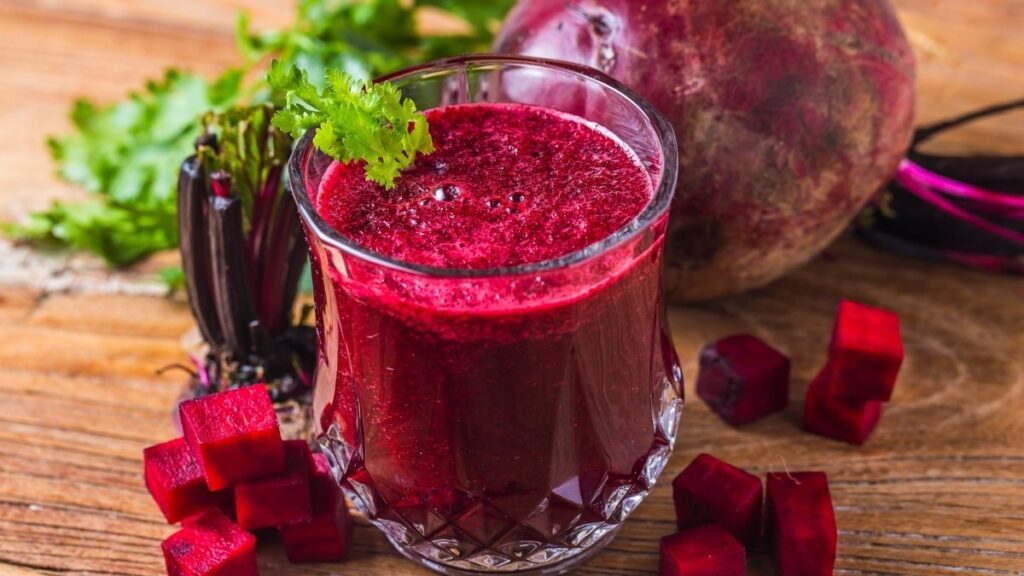
Beet juice contains high levels of nitrates that your body converts to nitric oxide, a compound that helps blood vessels relax and improves blood flow.
Studies show that drinking beet juice can lower blood pressure by 4-10 mmHg within hours. The effect is temporary but real, and regular consumption may provide ongoing benefits.
The challenge is that beet juice tastes strongly earthy. Many people mix it with apple or carrot juice, but remember that adds sugar. A better approach is drinking a small amount—4 to 6 ounces—of straight beet juice daily. You can also find beet juice shots at health food stores if you want a quick option.
Low-Fat Dairy and Alternatives

Low-fat milk and yogurt drinks provide calcium, potassium, and protein without excessive calories or saturated fat. Research from the DASH diet studies (Dietary Approaches to Stop Hypertension) shows that including 2-3 servings of low-fat dairy daily as part of an overall healthy eating pattern helps lower blood pressure.
Plain, unsweetened plant-based milk alternatives like almond milk, cashew milk, or soy milk can work too, especially if they’re fortified with calcium. Just check labels carefully—choose unsweetened versions with no added sugars and minimal sodium.
Herbal Teas for Variety
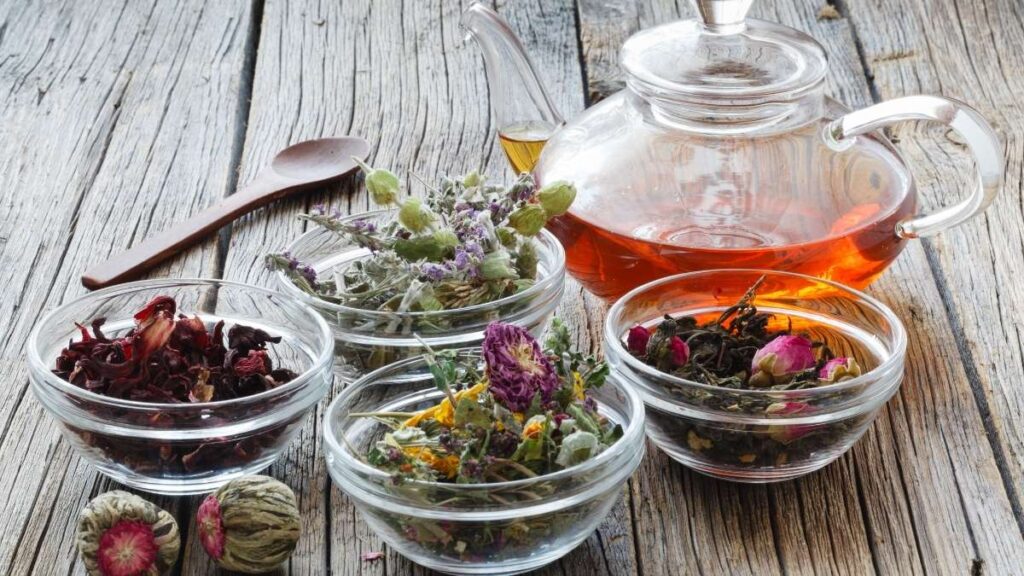
Beyond hibiscus, many herbal teas provide flavor variety without any blood pressure concerns. Chamomile, peppermint, ginger, and rooibos are all naturally caffeine-free and contain zero calories, sugar, or sodium.
Green tea deserves a mention too—while it does contain some caffeine (25-29 mg per cup), it also provides antioxidants called catechins that may support cardiovascular health. The caffeine content is low enough that most people can enjoy 1-2 cups daily without blood pressure concerns.
Experiment with different herbal teas to find flavors you genuinely enjoy. Having several options prevents boredom and makes it easier to stick with healthy beverage choices long-term.
How to Read Drink Labels Like a Blood Pressure Expert
Understanding beverage labels is a crucial skill for protecting your cardiovascular health. Manufacturers don’t always make it easy to spot problematic ingredients, but knowing what to look for gives you power.
Sodium: The First Thing to Check
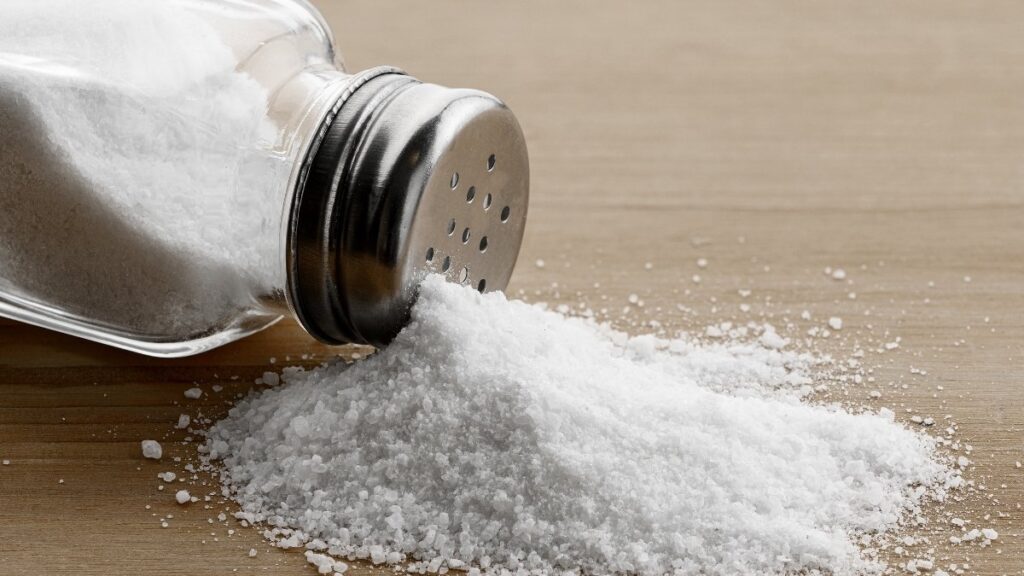
Find the sodium content on the Nutrition Facts panel. For people with hypertension or prehypertension, a general rule is this: beverages with more than 140 mg of sodium per serving should be occasional treats at most, not daily drinks. Ideally, look for options with less than 100 mg per serving.
Pay attention to serving sizes versus container sizes. A bottle might contain 2.5 servings, meaning you need to multiply the sodium content by 2.5 to get the actual amount you’re consuming if you drink the entire bottle.
Decoding Sugar in All Its Forms
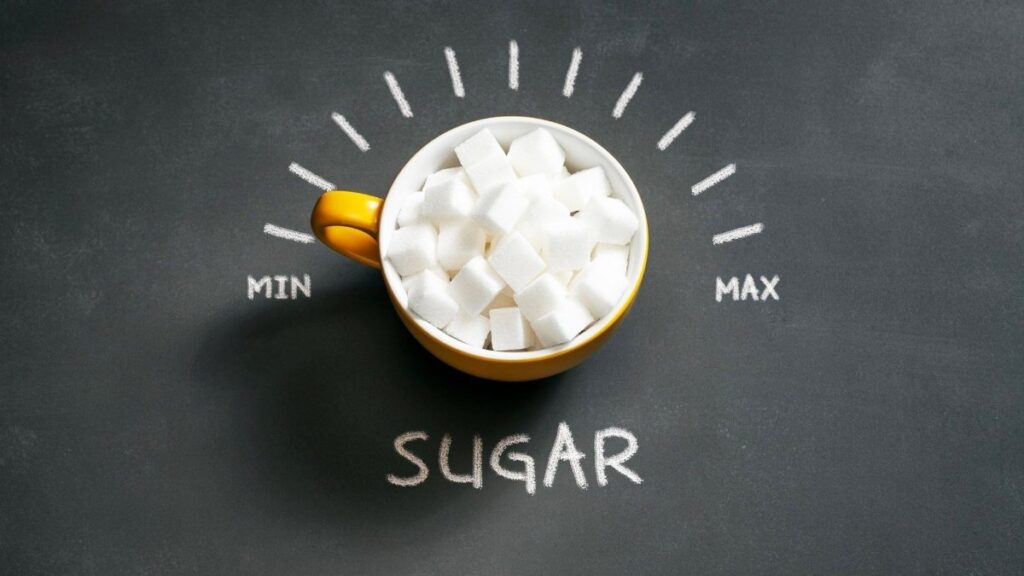
The “Added Sugars” line on nutrition labels (required as of 2020) tells you exactly how much sugar was added during manufacturing versus naturally occurring sugar. This is your key number. For blood pressure management, aim for drinks with less than 5 grams of added sugar per serving.
But also learn sugar’s many aliases because ingredient lists don’t always say “sugar.” Watch for: dextrose, fructose, glucose, maltose, sucrose, corn syrup, high fructose corn syrup, fruit juice concentrate, cane juice, honey, agave nectar, maple syrup, molasses, and any word ending in “-ose.”
If any of these appear in the first few ingredients, the drink is heavily sweetened.
Understanding Percent Daily Values
The % Daily Value shows how much of the recommended daily intake is in one serving. For sodium, the percentages are based on 2,300 mg daily—but if you have hypertension, your target is probably 1,500 mg.
This means you need to mentally adjust. A drink showing 15% Daily Value for sodium (345 mg) actually represents 23% of your more restrictive limit.
For added sugars, the FDA uses a 50-gram daily limit as the basis for percentages. The American Heart Association recommends 25 grams for women and 36 grams for men, so again, the actual percentage relative to your target is higher than what the label shows.
Red Flags to Watch For
Be suspicious when a drink’s serving size seems unrealistically small. A 20-ounce bottle listed as “2.5 servings” is a labeling trick—most people drink the whole bottle, so multiply everything by 2.5.
Be wary of drinks marketed with health claims on the front (“all natural,” “real fruit”) but check the actual nutrition on the back.
And watch out for products that list multiple types of sweeteners—this is often done to keep any single sugar from appearing first in the ingredient list.
Making the Transition: Your 30-Day Drink Swap Challenge
Changing your beverage habits doesn’t happen overnight, and trying to overhaul everything at once usually fails. This progressive 30-day plan gives you a realistic framework for making sustainable changes that will actually impact your blood pressure.
Your 30-Day Drink Swap Challenge
Week 1: Eliminate Worst Offenders
Start with the biggest threats: energy drinks and regular soda. If you need caffeine, switch to black or green tea. If you need carbonation, switch to flavored sparkling water. You will adapt in 3-5 days!
Week 2: Address “Healthy” Drinks
Reduce fruit juice to a 4oz maximum daily (or eliminate it). Check the sugar on “healthy” kombuchas and smoothies. Replace them with whole fruit and water to get the fiber that slows digestion.
Week 3: Evaluate Your Caffeine
Check your BP before and after coffee. If you see a spike of more than 5 mmHg, consider cutting back. Also, move all caffeine to before noon to protect your sleep quality, which directly impacts BP.
Week 4: Set Alcohol Limits
Define clear boundaries, such as 3 alcohol-free days per week and no more than one drink per day. Monitor your BP the morning after drinking vs. not drinking to see the pattern for yourself.
Track Your Progress
Use a home monitor to check your BP at the same time daily (morning is best). Record the numbers. Studies show that most people see measurable improvements of 4-8 mmHg within 2-4 weeks. This data keeps you motivated!
Why This Matters
The drinks you consume are either supporting your health or actively undermining it. Sugary, high-sodium, and high-caffeine/alcohol drinks trigger immediate physiological responses that raise blood pressure. Fixing your drink choices is one of the fastest ways to see a significant, measurable improvement in your health.
Week 1: Eliminate the Worst Offenders
Start with the biggest threats: energy drinks and regular soda. If you typically drink energy drinks, replace them with black or green tea for a milder caffeine boost, or try sparkling water if you need the carbonation sensation.
If soda is your daily habit, switch to flavored sparkling water. Yes, it tastes different at first, but most people adapt within 3-5 days.
Week 2: Address Fruit Juice and “Healthy” Drinks
Reduce any fruit juice consumption to 4 ounces daily maximum, and eventually eliminate it entirely if possible. If you’ve been drinking bottled smoothies, kombucha, or other “health halo” beverages, check their sugar content and either cut back significantly or switch to truly low-sugar alternatives.
Week 3: Evaluate Your Caffeine Situation
Check your blood pressure before and after your usual coffee or tea consumption. If you see spikes of more than 5 mmHg, gradually reduce your caffeine intake. Reduce by one cup per week to avoid headaches. If your blood pressure responds well to caffeine, you might be fine keeping moderate amounts (1-2 cups daily).
Week 4: Set Your Alcohol Limits
If you drink regularly, this week focuses on establishing clear boundaries. Define what “moderate” means for your schedule: for example, no more than 3 drinks per week, never more than one per day, and at least 3 alcohol-free days weekly. Experiment with lower-alcohol or alcohol-free options at social events.
Tracking Your Progress
Studies on dietary interventions for blood pressure show that most people see measurable improvements within 2-4 weeks. Some see results even faster. By the end of 30 days, you might observe systolic pressure drops of 4-8 mmHg if beverages were a major part of your problem.
Start Today: Your Blood Pressure Is Waiting
The drinks you consume every day are either supporting your cardiovascular health or actively undermining it. There’s no middle ground when it comes to sugary sodas, energy drinks packed with stimulants, excessive alcohol, or high-sodium vegetable juices.
These beverages trigger immediate physiological responses—blood vessel constriction, insulin spikes, sodium retention—that translate directly to higher blood pressure readings.
The worst offenders are easy to identify: energy drinks that combine caffeine, sugar, and stimulants; regular sodas delivering 15+ teaspoons of sugar per bottle; excessive alcohol that disrupts multiple blood pressure regulation systems; fruit juice that packs as much sugar as soda without the fiber benefits; and high-sodium vegetable juices that can deliver 40% of your daily sodium limit in a single glass.

